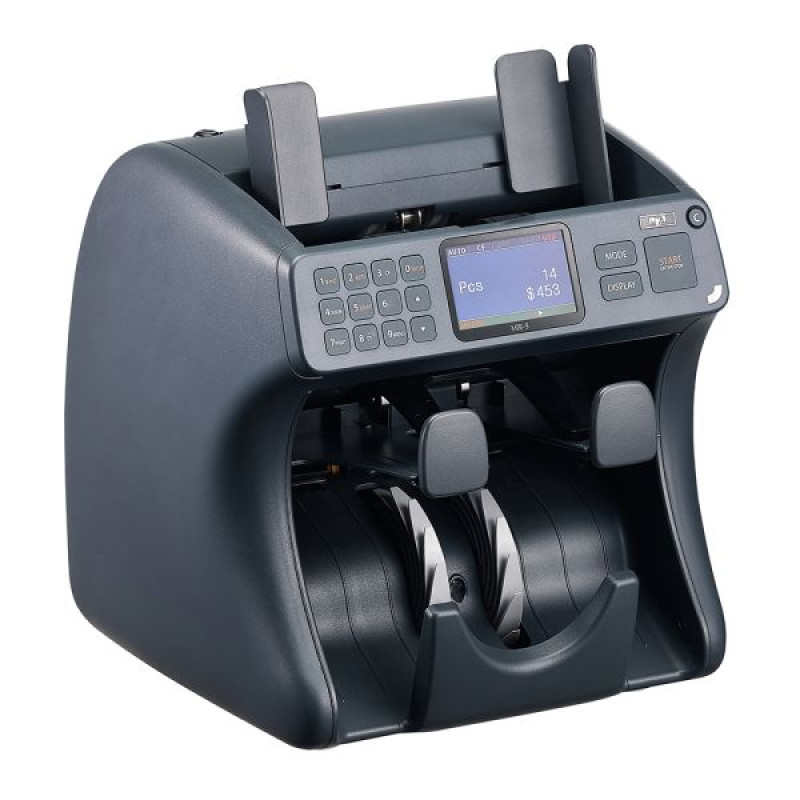In today’s cash-heavy retail, banking, and hospitality environments, efficiency and accuracy in counting currency are essential. Whether you’re running a busy convenience store, a hotel, or a back-office for a large institution, the right machine can make all the difference. Let’s explore how a reliable currency counting machine / money counting machine can change your cash-handling workflow, the core features to look for, and why investing in one is a smart business decision.
1. Why You Need a Counting Machine
A. Time is money
Manually counting stacks of banknotes takes considerable time and is prone to human error. According to industry sources, automating this task significantly speeds up workflows. For example, one blog states that many machines can count bundles in a fraction of the time it would take manually.
B. Accuracy and reliability
Beyond speed, accuracy is critical. A miscount can cost a business money or create reconciliation headaches. Modern machines boast near-100% accuracy thanks to built-in sensors and detection mechanisms.
C. Security / counterfeit detection
Accepting fake currency is a risk for any business. Many machines offer features to detect counterfeit bills using UV, magnetic ink, infrared, or other advanced scanning.
D. Better cash management
When you use a machine, you can streamline the end-of-day/counting processes, enable batching, value-counting, and reduce the time staff spend on counting so they can focus on customer service or other tasks.
2. What to Look for When Buying a Machine
If you’re considering purchasing a currency/money counting machine (such as from the product range at New Delmon Stationery or elsewhere), here are the key features and considerations.
A. Counting speed & capacity
How many notes can it process per minute? Entry-level machines might handle 600-900 bills/min, while higher end models exceed 1,000 bills/min. A larger hopper or feed tray means less frequent re-loading.
B. Mixed denomination / value counting
If you often handle unsorted stacks of different denominations, a machine that can detect mixed bills (and output the total monetary value, not just number of bills) is a big plus.
C. Counterfeit / error detection
Look for machines that include UV, MG (magnetic), IR, size detection, half-note/chain-note detection, and jam/error alerts.
D. Batching / adding / value modes
These modes allow you to automatically stop after a set number of bills (batching), accumulate totals (adding mode), or calculate value.
E. Reliability & service
Choosing a well-supported brand matters: you’ll want reliable sensors, regular cleaning/maintenance, and good after-sales service.
F. Fit for your business volume
If you’re a large bank or cash-in-transit company, you might need a high-performance system. For smaller retail, a simpler, cost-effective model may suffice.
3. Sample Machines Worth Considering
Here are a few machines (with varying budgets and feature sets) you might evaluate.
TVS Electronics CC 232 Classic+ Loose Note Counting Machine
₹6,999
•
Moglix
GOBBLER GB 8888‑E Mixed Note Value Counting Machine
₹9,802
•
Flipkart
GOBBLER GB 4388‑MG Note Counting Machine
₹4,602
•
Amazon.in
Generic Note Counting/Currency Counting Machine
₹5,199
•
Amazon.in
Bankomat Premium Quality Cash/Note Counting Machine
₹5,694
•
Flipkart
GOBBLER Business‑Grade Note Counting Machine
₹4,696
•
Amazon.in
Here’s a quick overview:
- TVS Electronics CC 232 Classic+ Loose Note Counting Machine: A strong mid-range option with UV/MG/MT/IR/DD counterfeit detection, suitable for Indian market.
- GOBBLER GB 8888‑E Mixed Note Value Counting Machine: Premium model that supports mixed denominations and value counting, ideal for higher volume operations.
- GOBBLER GB 4388‑MG Note Counting Machine: Budget-friendly but with basic features; good for smaller shops.
- Generic Note Counting/Currency Counting Machine: An entry-level generic model to get you started.
- Bankomat Premium Quality Cash/Note Counting Machine: Focuses on reliability and counterfeit detection at a moderate price.
- GOBBLER Business‑Grade Note Counting Machine: Business-grade durability, for heavier usage.
- The two placeholders represent higher end/mixed denom or enterprise bulk solutions if your volume demands them.
4. Best Practices for Implementation & Use
A. Integrate into your cash-handling workflow
Position the machine where daily cash is aggregated (e.g., after the till closes). Use batching at shift end to reconcile quickly.
B. Train staff
Ensure staff know how to feed notes correctly, clear jams, clean sensors, and interpret error alerts.
C. Routine maintenance
Dust and ink residue degrade sensor accuracy. Regular cleaning and occasional calibration maintain performance.
D. Monitor results
Use the machine’s reports (if available) to track volumes, discrepancies, and spot irregular patterns.
E. Combine with security practices
While the machine helps detect fakes, also maintain physical security, reconciliation, and audit trails to safeguard cash.
5. Conclusion: Is It Worth It?
Absolutely. Whether you’re handling cash regularly in retail, hospitality, banking or any cash-intensive operation, investing in a quality currency/money counting machine pays off in three major ways:
- Time saved — freeing up staff to focus on revenue-generating tasks instead of counting.
- Reduced errors & losses — fewer miscounts, less manual fatigue, stronger fraud prevention.
- Better professionalism & control — presenting a smooth, reliable cash process strengthens your business credibility.





Comments